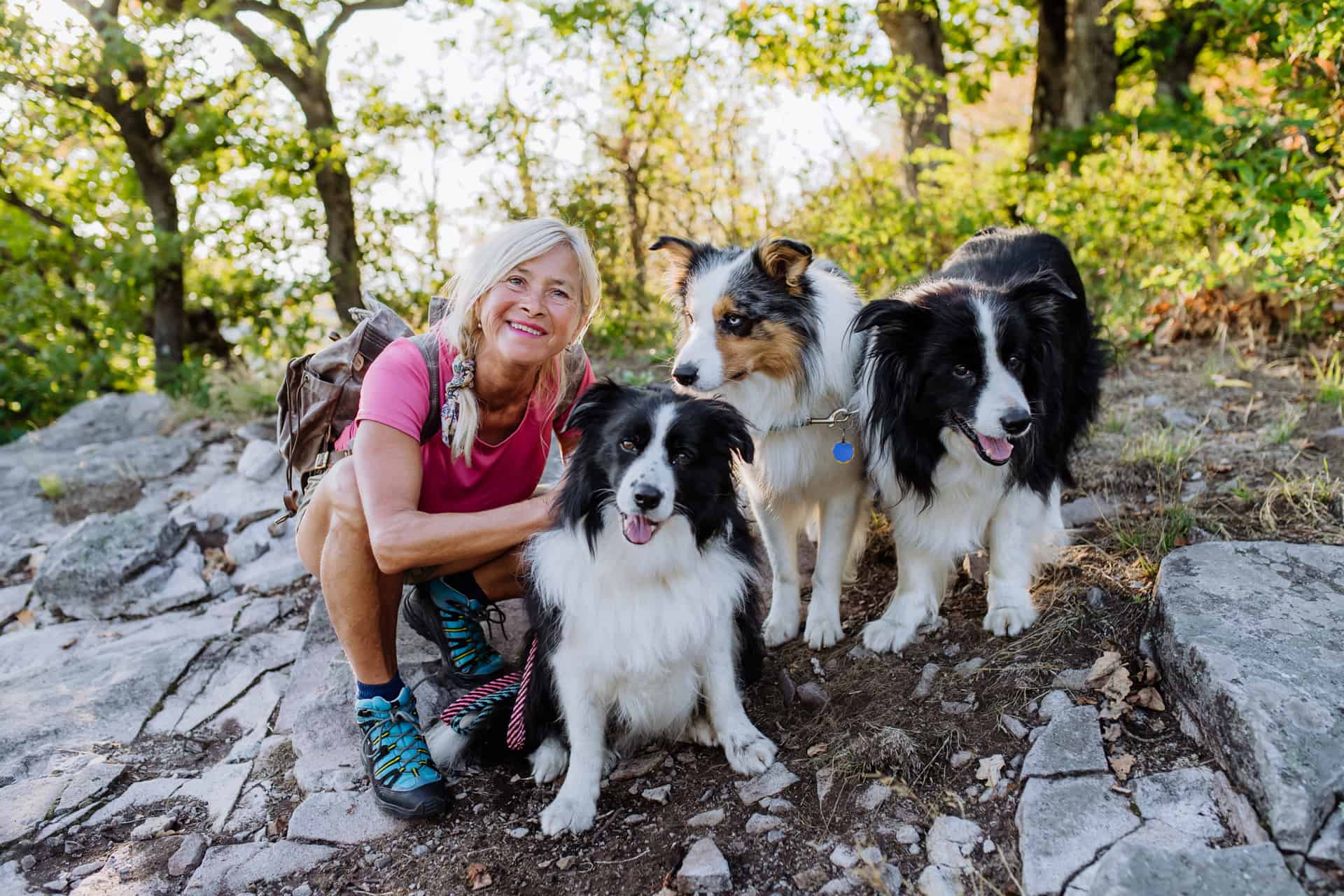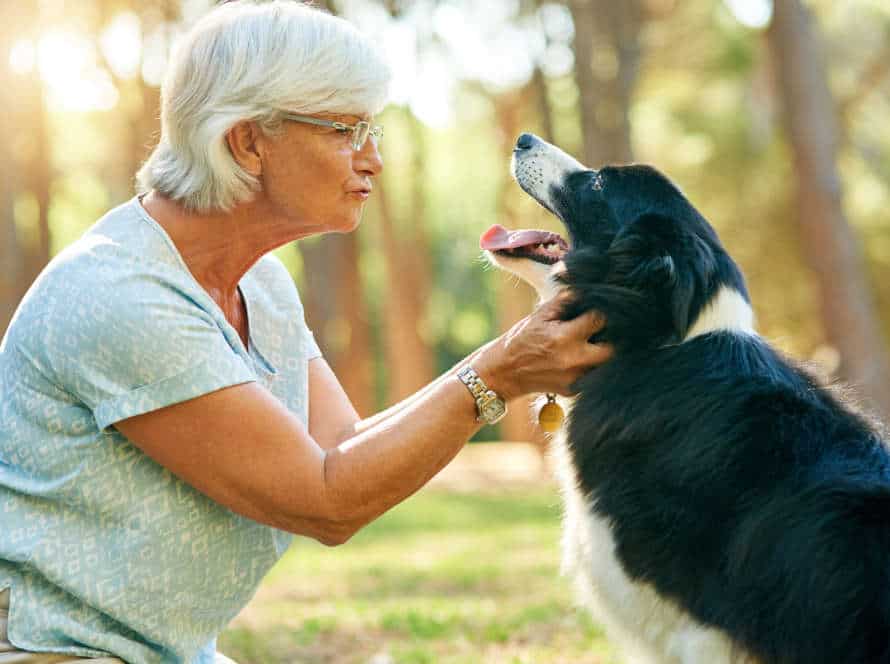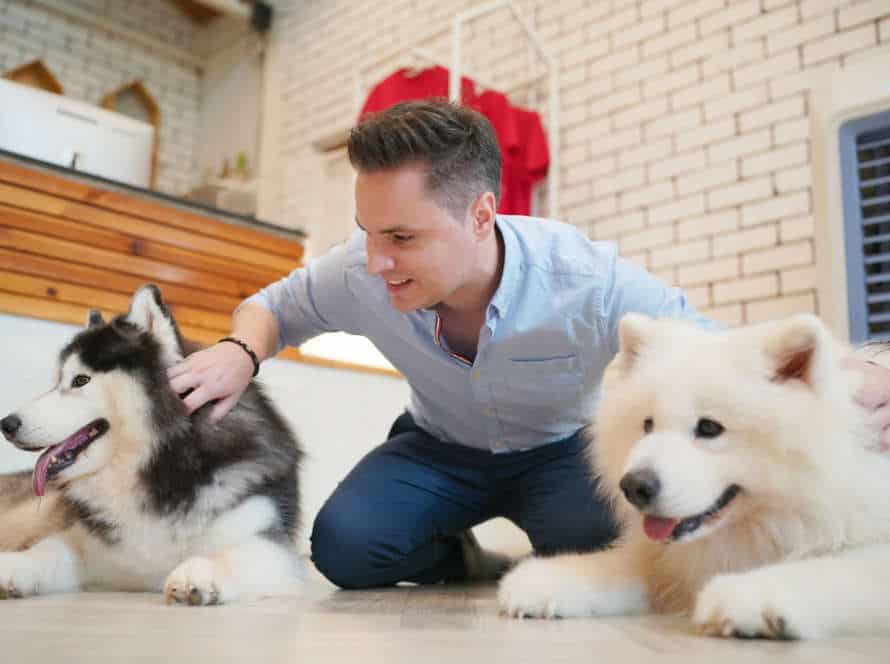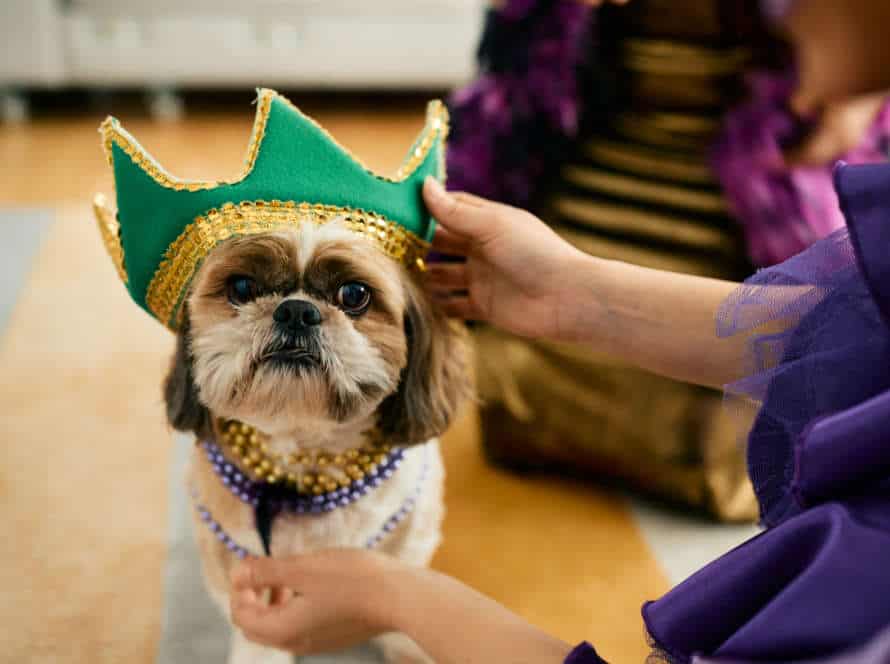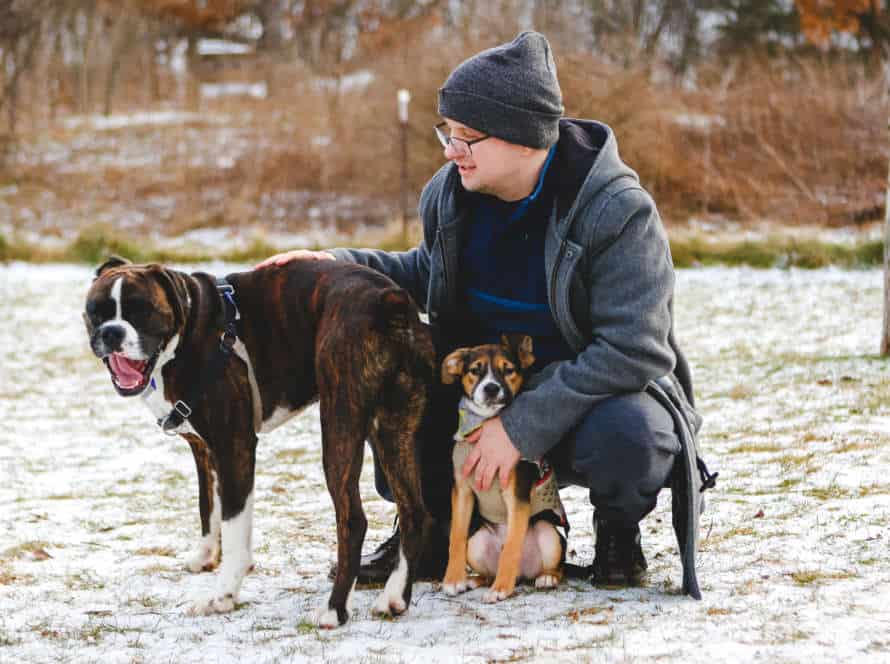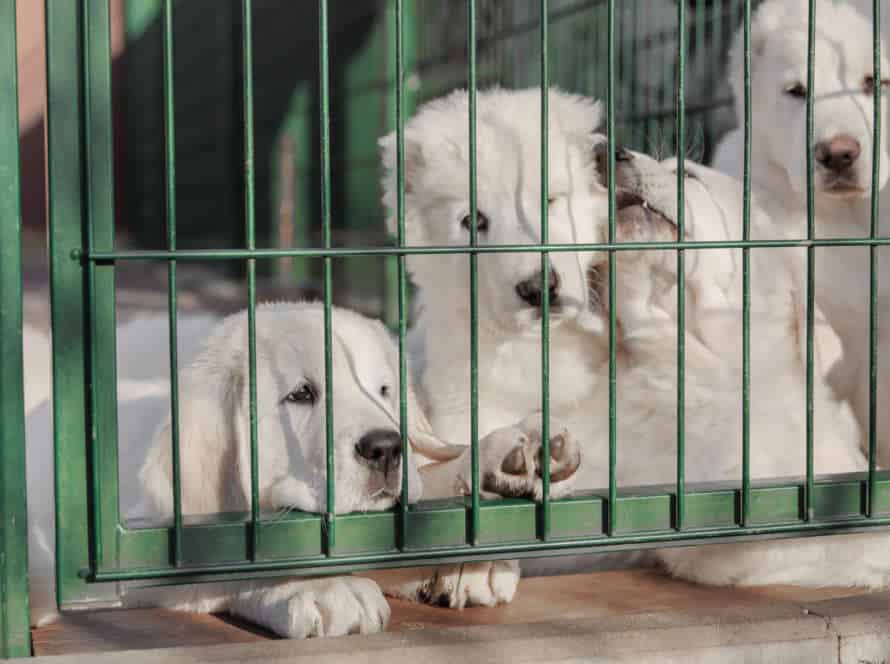Avoiding Common Pitfalls in Dog-to-Dog Interactions
Dog-to-dog interactions can be tricky. Miscommunication and aggression can happen. Here are tips to stay away from this:
- Understand your dog’s body language – tail position, ear position and posture. This will help you spot fear, stress or aggression.
- Don’t put your pooch in crowded or noisy places.
- Introduce your pup to new dogs slowly and in a controlled space. Let them sniff each other and observe for any tension or aggression.
- Punishment-based training can worsen fear and aggression, so don’t do it.
Know your furry friend’s body language and use controlled environments to introduce them to new dogs. This way, you can steer clear of common pitfalls and help them have positive experiences.
Understanding Canine Body Language
Interacting with other dogs can be hard. To avoid confusion, learning their body language is key. Dogs use subtle and obvious cues to express themselves. Let’s take a peek at a few of them. Cues like their facial expressions, tail wagging, and body posture all give off signals. Understanding these cues can help figure out their emotions and intentions.
Common Signs of Fear and Aggression
Dogs can show signs of fear and aggression. It’s important to understand what they’re trying to communicate. Here are some common signs:
- Raised hackles – when fur on the spine stands up, it’s a sign of being threatened or scared.
- Growling – usually a warning of aggression. It shows the dog is uncomfortable.
- Stiff body language – standing rigidly with tail up means a dog is feeling defensive.
- Showing teeth – baring teeth is a sign of aggression and that the dog is ready to fight.
By understanding these signs, we can avoid conflicts and learn to interact safely with dogs.
Reading Dogs’ Tails and Ears
Tails and ears of dogs are important clues to their feelings. They can help you get an idea of their body language and avoid problems when you meet other dogs.
Tail wagging: Don’t assume that a wagging tail always means a happy pup. If the tail is low, it might mean the dog is scared or submissive. If the tail is high, it could indicate dominance or aggression.
Ears: If a dog’s ears are up and looking forward, they’re alert and attentive. But, if the ears are flattened, it’s a sign of fear or submission.
Other body language: Dogs also communicate through their posture, facial expressions and sound. All these together can tell you how a dog feels.
By understanding these signals, you can interact with dogs more confidently and know when to give them space, stop or avoid a situation.
Pro tip: Always get permission from the owner before petting or meeting their dog – it’ll make sure everyone’s experience is a positive one.
Knowing When to Avoid Other Dogs
Recognizing when to steer clear of other pups is a must for pup owners. It helps them comprehend their furry friends’ body language and avoid bad encounters with other doggos. Here are some signs that pups give when they want to be left alone:
- Stiff posture and face
- Growling or barking
- Fur or hair raised on the back
- Not making eye contact or turning away
- Puckering their lips or licking their nose
When you spot any of these, it’s best to give them time and space. Redirect your pet to another spot to avoid overstimulating them. You can also ask an expert in dog-to-dog interactions to help manage the tricky situation.
Preparing for Dog-to-Dog Interactions
When two dogs meet, be ready for what happens. Dogs are social animals. Watch their body language and be aware of any aggression. Every dog is individual, so be prepared for any situation.
Here are some tips for preventing bad encounters between dogs:
Properly Fitting Your Dog’s Leash and Collar
Fitting a collar and leash to your pup properly is key for a safe and comfy walk. Especially when you’re expecting dog-to-dog meetings and want to dodge common issues.
Here’s some tips to remember:
- The collar should be tight enough so they don’t slip out, but not too tight that it’s uncomfortable.
- Stick two fingers between the collar and their neck.
- The leash should give them some freedom, but not too long that they start pulling or wander away.
- Use a strong and well-made leash and collar that can handle their size and strength.
By making sure the leash and collar fit properly and securely, you can dodge any situations that can harm your pet or others.
Training Your Dog with Positive Reinforcement
Training your pup with positive reinforcement is a humane, effective, and scientifically proven way. Here’s how it works:
- Identify a particular behaviour you’d like your doggo to learn.
- Choose a reward your pup loves, such as treats, toys, or praise.
- As soon as pup exhibits the desired behaviour, reward them with the chosen reward.
- Be consistent with the rewards. Use them every time pup does the behaviour.
- Don’t use punishment or negative reinforcement. This can harm pup’s trust and confidence.
- With practice and time, pup will associate the desired behaviour with the reward. They’ll be more likely to repeat it. This technique can be used for all kinds of behaviours, from basic obedience to advanced tricks.
Pro tip – Positive reinforcement can be used to build a strong bond between you and your pup. Reward pup for good behaviour and quality time spent together with treats, toys and praise.
Assessing Your Dog’s Temperament
Assessing your pup’s nature is essential to get ready for doggo-to-doggo interactions and to avoid common blunders that could emerge then. Here’s how to assess your pup’s temperament:
- Watch your pup’s reactions to various stimuli, for example new peeps, other doggos, and odd noises.
- Pay attention to your pup’s body language and doings, such as tail wag and barking.
- Expose your pup to a wide range of circumstances they could come across while interacting with other doggos, like loud noises or sudden, unforeseen movements.
- Think over consulting a professional doggy trainer or behaviorist to aid you in assessing your pup’s temperament and recognizing potential issues that could show up during interactions with other doggos.
By evaluating your pup’s temperament and being proactive in training and socializing, you can make sure that your doggo-to-doggo interactions are beneficial and secure for everyone included.
Approaching Other Dogs Safely
Meeting another dog can be a challenge. Acknowledge the body language of both your pup and the other one, to make sure the encounter is secure and fun. It’s wise to take precautions when introducing two dogs. These steps will help you to avoid common issues when dogs socialize. Let’s examine these tips more closely:
- Introduce the dogs in a neutral area, where neither dog feels as though they are on their home turf.
- Keep the dogs on-leash to ensure that you have control over the situation and can prevent any accidents.
- Observe the body language of both dogs. Signs to look out for include growling, baring teeth, a stiff posture or trying to avoid the other dog. If you notice any of these signs, it’s best to call off the meeting.
- Let the dogs sniff each other while keeping the leash loose. This is how dogs get acquainted with one another, but be sure to watch their body language closely as they do so.
- End the meeting on a positive note, by rewarding your dog with treats or praise. This will create positive associations with socializing with other dogs.
Identifying Signs of Aggression in Other Dogs
Dogs show aggression, just like us humans. It is important to recognize the signs of aggression in other dogs in order to approach them correctly. Here are a few of these signs:
- Stiff body: If a dog looks tense, it could mean it’s aggressive.
- Growling, baring teeth, and snarling: These are all signs of aggression.
- Raised fur: If a dog’s fur stands up on its back or neck, it may feel threatened.
- Direct stare: This is a warning sign that the dog may be feeling threatened.
- Tail position: A raised or stiff tail means aggression, while a relaxed tail signals calmness.
It is important to be careful and respect a dog’s space. Don’t make direct eye contact, stay away, and ask their owner for permission before interacting.
Introducing Dogs on Neutral Ground
Introducing dogs in a neutral place is important. It helps them interact safely and avoid problems. Here are some tips:
- Find a park or field that neither dog has been to before.
- Put each dog on a leash with a confident and relaxed handler.
- Let the dogs smell each other from six feet away.
- After they have smelled each other, let them play together for a while.
- Watch their body language for signs of aggression. Use verbal cues if needed to separate them.
Introducing dogs on neutral ground is a great way to ensure both dogs and handlers have a good experience.
Keeping Your Dog Safe in Crowded Areas
Crowded places can be daunting for doggies. Knowing how to keep them safe is key. When approaching other canines, these tips should be followed:
- Always ask the owner first.
- Take your time, keep 6 feet away.
- Let both pooches sniff each other and avoid long stares or contact.
- Be observant – watch out for signs like growling, erect posture, or fur standing up.
- If either pup shows fear/aggression, take your doggy away calmly and quickly.
- Remember, all dogs are different and in bustling places, be ready for anything.
Managing Difficult Dog Interactions
Dogs meeting other dogs can be tricky! It’s important to recognize the potential problems. These problems can come from the dogs not understanding one another’s body language, or owners jumping in too fast. To manage these issues, you need to know the common pitfalls and how to solve them effectively.
Dealing with Reactive and Aggressive Dogs
Dealing with reactive, aggressive doggos requires patience, training, and consistent management. To avoid troubles, be aware of situations that can rapidly get out of hand. Here are tips to keep in mind:
- Notice signs of stress and anxiety, such as growling, barking, or snarling earlier.
- Don’t confront or punish your pup.
- Reduce other dog and human exposure until your doggo has good social behavior.
- Use positive reinforcement techniques to teach your pup better behavior.
- Ask a professional for help.
It’s important to remember that it takes time, patience, and effort to manage reactive, aggressive doggos. Prioritize safety for both your pup and others.
Separating Fighting Dogs Safely
When it comes to splitting up dogs that are fighting, the key is to do it in a secure and speedy way, to avoid harm to yourself or the dogs. Here are some tips:
- Stay calm. Don’t grab their collars. It can cause injury.
- Make a loud noise like an air horn or whistle. This will surprise the dogs and distract them from fighting.
- Use a blanket or board to block them off from each other.
- Once they’re separated, remove them to another area to avoid future issues.
Pro-tip: Ask a professional dog trainer for help if you’re worried about how your dog behaves around other dogs.
Understanding the Importance of Proper Socialization
Socializing dogs is key for them to be happy around humans and other dogs. This builds confidence, reduces fear and anxiety, and helps them adapt to new places.
Introduce your dog to different people, pets, and places gradually. Make sure to observe their behavior and not force them into anything.
In case of fear or aggression, don’t punish your dog. Get help from a professional trainer to sort out any issues.
Remember, socialization isn’t a one-off task. With patience, regularity and positive reinforcement, your dog will become a friendly companion.
Pro tip: Keep exposing your dog to new things for them to be confident and adaptive.
Frequently Asked Questions
Q: What are some common mistakes dog owners make when introducing their dogs to other dogs?
A: One common mistake is allowing the dogs to approach each other too quickly without proper supervision. Another is not recognizing signs of aggression or discomfort in the dogs.
Q: How can I tell if my dog is uncomfortable or aggressive during an interaction with another dog?
A: Some signs of discomfort include avoiding eye contact, licking their lips, and pulling away from the other dog. Signs of aggression can include growling, baring teeth, and lunging.
Q: What can I do to prevent my dog from getting into a fight with another dog?
A: It is important to always supervise interactions and intervene if necessary. You can also practice obedience training with your dog to improve their impulse control and prevent impulsive behavior.
Q: Should I allow my dog to play off-leash with other dogs?
A: It depends on your individual dog and their behavior. If your dog has a history of aggression or is uncomfortable around other dogs, it is best to keep them on a leash during interactions.
Q: What should I do if my dog is attacked by another dog?
A: First, make sure both dogs are separated and safe. Seek veterinary care if needed and report the incident to the appropriate authorities.
Q: Can I train my dog to be more comfortable around other dogs?
A: Yes, obedience training and socialization can help improve your dog’s comfort level around other dogs. Consult with a professional dog trainer for additional guidance.

